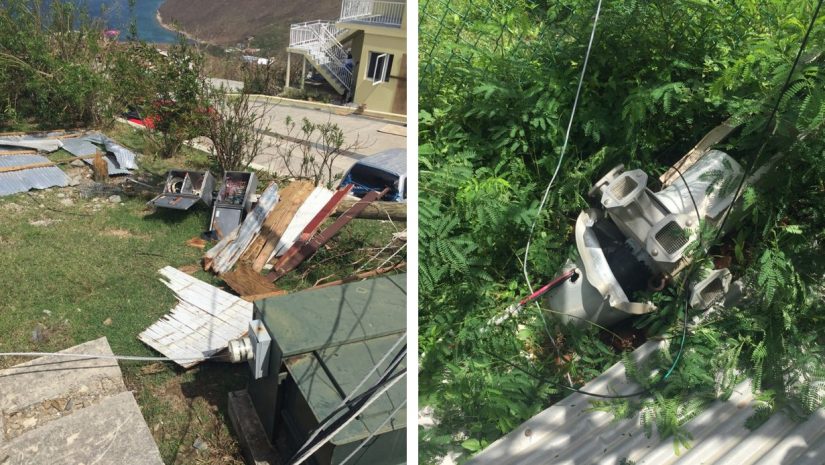Wednesday, January 17, 2018– The Cabinet of the Virgin Islands has approved the expenditure of $442,000 to allow for the release of immediate funds to re-establish the National Early Warning System.
Governor Augustus Jaspert said the Premier and Members of his Cabinet have met and received an indication of what will be needed to bring the system back to a fully functional state.
Governor Jaspert said, “I am pleased that the funding will now be made available to the DDM to commence the restoration of the network. It is critical that these instruments be available as we enter into what might be another active hurricane season and to ensure that we have the ability to quickly alert the public in times of sudden onset events.”
The Governor added, “The new facilities to be built will not only provide for the establishment of a new National Emergency Operations Center but will accommodate the 15 members of DDM staff and make provisions for the storage of emergency supplies and for the continuity of critical Government functions in the event of catastrophic events such as those we recently experienced. This center is critical to the future of the Territory and our ability to ensure that residents are fully prepared and are able to be quickly notified.”
Some of the networks were established as far back as 1979 and have been used to provide immediate warning and notification to persons throughout the Territory. As a result of the National Early Warning Programme the DDM was able to apply for and receive Tsunami Ready Recognition in 2014 and this was renewed in June 2017.
Emergency Communications Manager Jasen Penn while explaining the extent of the destruction said, “The impacts from the two hurricanes resulted in these critical networks being destroyed leaving a major challenge for government to reach the affected communities, following the passage of Irma and Maria. Since then the DDM has worked with its partners to undertake a full assessment of the impact to the networks and have provided an indication of the losses.”
Mr. Penn further explained the efforts made thus far, “we have reached out to our partners in Italy, Germany and the USA to re-establish the systems. Many of them have provided significantly reduced rates and others will contribute full labour and installation costs. The Puerto Rico Strong Motion Programme and Seismic Network team of engineers will be in the Territory in the next two weeks to meet with the DDM to establish a plans for the installation of the new equipment throughout the Territory.”
The Emergency Telecommunications and Hazard Monitoring Programme included a total of 7 sirens; a National Emergency Broadcast System connected to 4 local radio stations; a Radio Data System which enabled the activation of over one hundred smart radios through 3 local FM stations; 18 weather stations; 4 strong motion sensors and 3 fully establish seismic stations directly linked to the Puerto Rico Seismic Network; a number of satellite phones located at strategic points throughout the Territory; Tsunami Warning signs; a VSAT terminal on Anegada; a fully functioning tide gauge and a telecommunications network with 4 repeater sites that allowed for linkage with over 100 sites both on land and at sea.
Government has also approved the temporary establishment of the DDM in the Simmonds Building on DeCastro Street while plans are being set in motion to commence the construction of new headquarters in MacNamara.
The Department has been directed to work expeditiously with its partners to have the networks re-established as quickly as possible.





